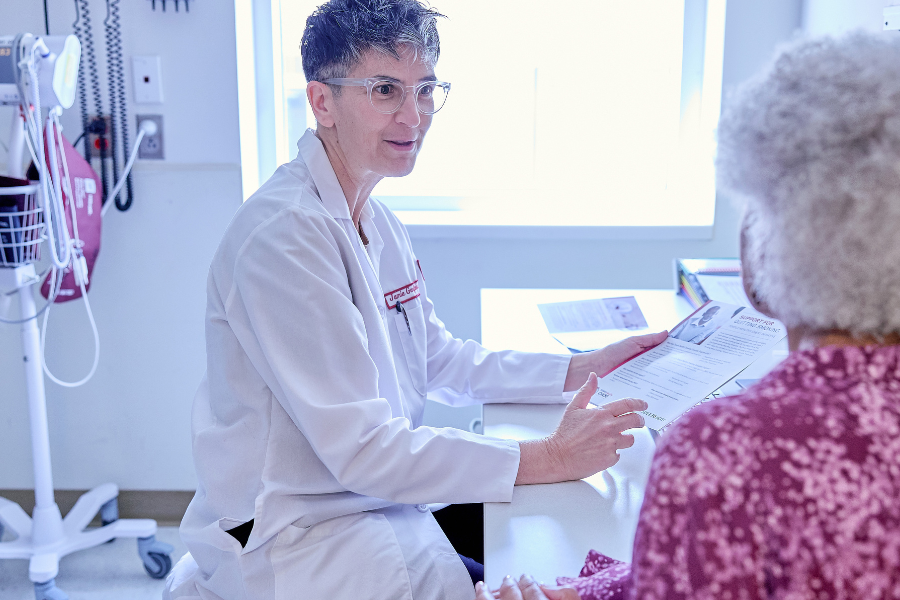Pulmonologist Erin Camac, DO, FCCP, routinely gets to witness an almost unbelievable transformation in some of her patients. It makes her day to watch patients with advanced lung disease walk out of her clinic with a revised diagnosis that helps them breathe better, with fewer meds and sometimes no more need for supplemental oxygen.
In her role as an interstitial lung disease (ILD) specialist at Temple University Hospital, Dr. Camac works with a multidisciplinary team to properly diagnose patients with advanced fibrotic lung diseases like idiopathic pulmonary fibrosis — and guide their treatments to achieve the best outcomes.
Q: Why are interstitial lung diseases so difficult to diagnose?
Dr. Camac: Diagnosing ILD is an incredible clinical challenge because this is a diagnosis of exclusion. We have to sort through all of the hundreds of possible lung diseases that could be causing the patient’s symptoms, like coughing and shortness of breath, and rule them out before we can firmly say, “This is the diagnosis you have.”
Q: Why is the diagnosis so important in ILD?
Dr. Camac: Patients who have an incorrect diagnosis will experience increased breathlessness. They will experience increased cough. About 80% of the time, they also develop late-stage symptoms like swelling of the fingertips or swelling of the feet, which can signal even more concerning outcomes for them.
Patients with any kind of complex lung or fibrotic lung disease are at enormous risk if the diagnosis is not made correctly. These challenging clinical diagnoses require not just one expert, but a team of experts working together. That’s what we have at the Temple Lung Center — a team of experts who collaborate on your care so you can go forward with your treatment plan, with transplant if it’s ever needed or with clinical trials.
Q: How does the difficulty in diagnosing interstitial lung disease affect patients?
Dr. Camac: Unfortunately, these diagnoses on average take many years to get right. The average patient will see 3 or more doctors before they get the proper diagnosis.
Patients who do not get the proper diagnosis are, unfortunately, very, very likely to have a rapid decline in quality of life over several years.
So even if you have a pre-existing diagnosis of interstitial or fibrotic lung disease, seeking out a second opinion can be of benefit to you. Many times, a second opinion at a center like Temple will provide you with a multidisciplinary group of experts who can:
- Evaluate what’s already been done for you
- Help to determine if the diagnosis is sound or unsound
- Offer what treatment options may be available with us that may not be available at your local center
Q: What treatment options do patients have at Temple Lung Center for advanced fibrotic lung diseases like ILD?
Dr. Camac: Treatment options for complex and fibrotic lung diseases are changing rapidly. Today, we have non-steroid alternatives for treatment that can result in equal or better outcomes for patients over the long term, and which we’re very proud to offer. These treatments also have very few side effects.
Of course, Temple also offers patients access to clinical trials of new medications and treatments. In fact, we produce enormous multi-center trials that study medications we think might be beneficial for patients. We also have a renowned Lung Transplant Program for patients with very advanced disease.
For patients seeking a second opinion on their interstitial lung disease, such as idiopathic pulmonary fibrosis, Temple Lung Center offers the most precise diagnostic capabilities and advanced care available.

